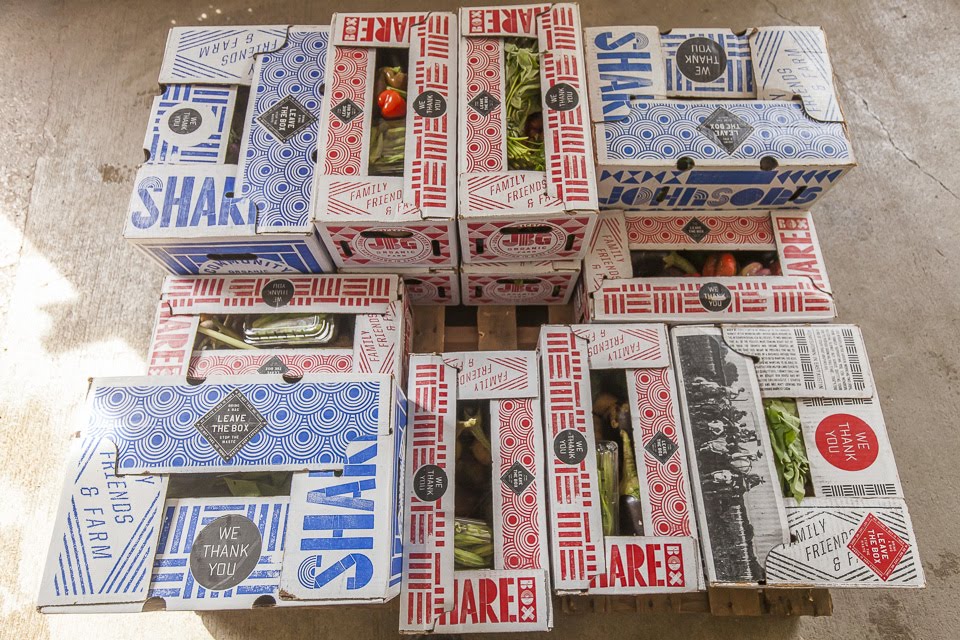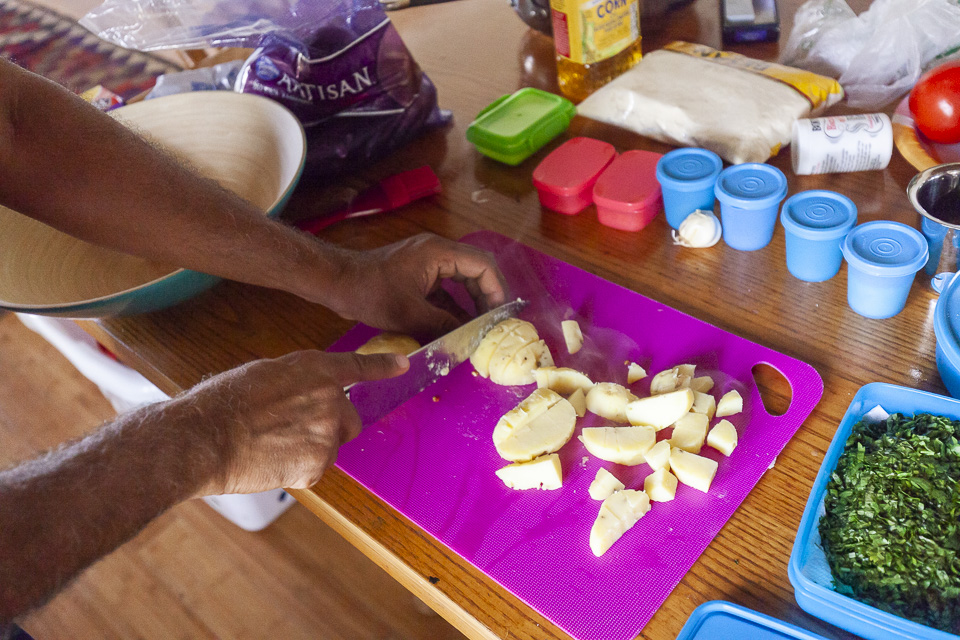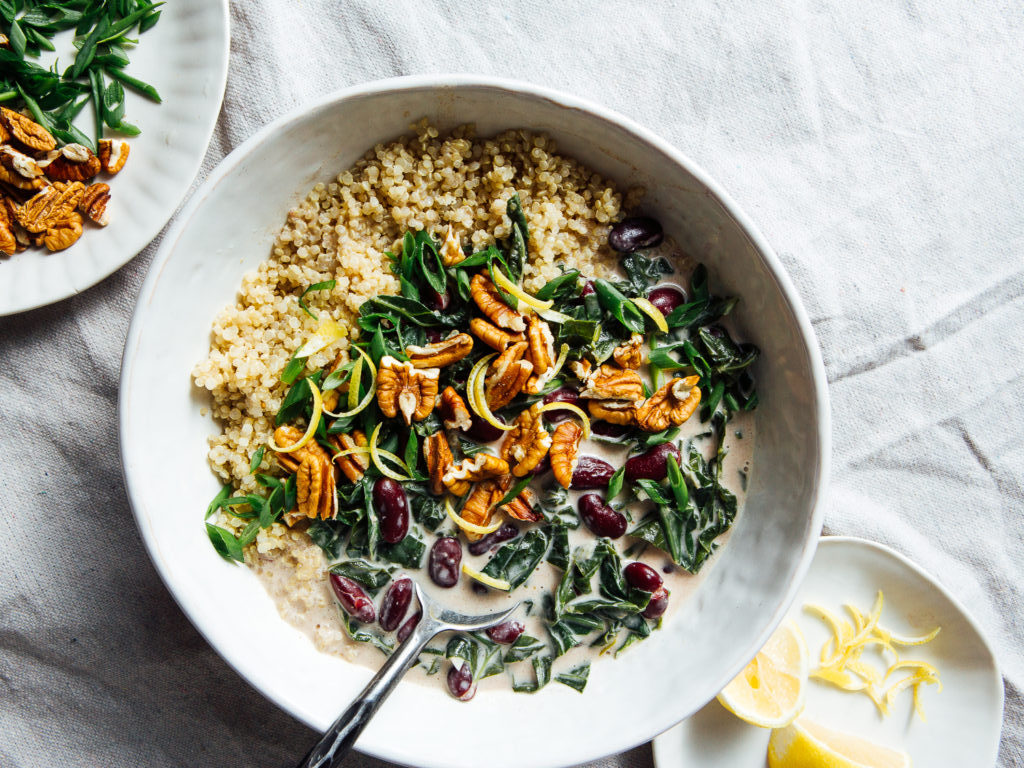
HOW TO UNPACK YOUR CSA SHARE AND FARMERS' MARKET HAUL
11/08/19 — Ada Broussard
Yay! It’s your lucky day! A beautiful box or tote bag is brimming with seasonal vegetables, waiting for you to unpack, and devour. Maybe you’ve customized your CSA share (more on how to do that here) and you’ve got each meal perfectly planned. Or maybe, you didn’t pick the contents of your CSA box, and what’s showing up on your doorstep or at your community pickup location is a mystery. (But did you know we post CSA contents on our website every Tuesday and on social media every Wednesday?). Whether you meticulously plan the fate of each vegetable or whether you’re more of a go-with-the flow kinda CSA member, we know that it takes some devotion to use each and every item in your box. Today, we’re sharing 5 practices that will help you unpack, prep, and eat your veggies.
![]()
![]() Got a moment? Chop some potatoes. Photo by Scott David Gordon.
Got a moment? Chop some potatoes. Photo by Scott David Gordon.
![]() Did you catch Mackenzie's recipe for Collards with Miso and Coconut? If this isn't a combination of flavors you'd normally cook with, give it a whirl!
Did you catch Mackenzie's recipe for Collards with Miso and Coconut? If this isn't a combination of flavors you'd normally cook with, give it a whirl!
Congratulations if you’re reading this thinking about how you never have trouble eating your way through your bushel’s bounty. But if you sometimes struggle to make your way through all the vegetables, we hope these quick tips help you. Please remember to be in touch - we’re happy to answer any questions you might have or any concerns about swapped items, weird-looking radishes, or mystery greens.
CSA Members: Thank you to those of you who filled out our recent CSA Survey. If you didn’t give us your feedback but would like to, just check your email - the survey link should be there. If you have any other tips for unpacking and utilizing your CSA Veggies, we want to hear about it! Shoot Faith an email to farm@jbgorganic.com with any tips or tricks you’ve picked up along the years. We’d love to share here on the blog.

1. Have fun.
Use the unpacking process as a moment of reflection: You’re a grownup adult, and you’ve chosen to spend your hard-earned dollars on local and organic produce. You’re supporting a local farm, and helping to employ at least 50 full time farmers. (Thank you!) The bunch of kale in your hand was connected to a root system just yesterday, and was cut by hand by a JBG farmer. It’s as fresh as it gets! We know the unpacking process can take a hot-minute, but we hope it’s a minute (or 10) you can enjoy. Put on some tunes, maybe a cup of tea, and revel in the bounty we picked for you.2. Storage
We’ve been hammering the importance of proper vegetable storage a lot lately, so we won’t go into too much detail. But in general: treat your veggies like the locally-sourced fresh treasures that they are…. Store them properly, and they’ll stay fresher, longer.3.Micro-Prep Moments
Mirco-Prep Moments: We love Christna Chaey’s suggestion to “cook something every day”. She suggests to work little moments of food prep into your daily routine anytime you’d be in the kitchen, anyway. For her, this means doing a bit of meal prep (like chopping some greens or grating some garlic) while she waits for her morning coffee to brew. Doing tiny bits of prep here and there to help ready your veggie ingredients will make cooking dinner a speedier enterprise. For CSA members, we love the idea of peeling and chopping your carrots when you have a spare moment, washing and drying your salad greens, or roasting your beets and big rustic chunks of sweet potatoes. Got a moment? Chop some potatoes. Photo by Scott David Gordon.
Got a moment? Chop some potatoes. Photo by Scott David Gordon.
4. FIFO
If you’ve worked in a restaurant, grocery store, farm, (and maybe an investment firm?) you likely know about the concept of FIFO, or First In, First Out. This is how we manage our large, walk in coolers at the farm. When a new bin of kale is brought in from the fields, it’s carted over to our kale pallet. The bins of kale from yesterday are moved to the front of the pallet, for easiest access, and the newest kale is placed in the very back of the pallet, out of reach. This practice is the cornerstone of our cooler management, and it ensures that we’re able to go through bins of kale, for example, in a day or so’s time, without accidentally letting one bin of kale sit in the cooler for too long and loose quality. Use this logic with your own CSA boxes: If you get some sweet potatoes in your CSA share but still have a few leftover from last week, put the new ones in the back and move the older ones to a space where you will get to them first. When unloading vegetables into your crisper drawer, use this time to take inventory of what is still leftover from last week’s share - move the older produce to the front, and also make a mental note that those need to be used soon.5. Dream a little.
Perhaps we ran out of radishes, and purple kohlrabi are showing up in your CSA box instead. Use this unexpected and unfamiliar vegetable as a moment to stretch your culinary creativity. If you need some inspiration, this Buzzfeed article titled 31 Things to Do with Confusing CSA Vegetables is relevant. Some of our other favorite resources are The JBG Recipe Archive, Bon Appetite, and Food 52. When in doubt, use the google search bar: list the vegetable you’re looking to use, plus any other ingredients you’d like to use up. A search for “khlorabi, parsley, and milk” could lead you on path of fritters, soup, or a cheesy casserole. Life’s too short not to experiment in the kitchen from time to time. Chances are, you’ll cook something edible. And if you’re using seasonal vegetables, it will likely even taste good. Did you catch Mackenzie's recipe for Collards with Miso and Coconut? If this isn't a combination of flavors you'd normally cook with, give it a whirl!
Did you catch Mackenzie's recipe for Collards with Miso and Coconut? If this isn't a combination of flavors you'd normally cook with, give it a whirl!
Congratulations if you’re reading this thinking about how you never have trouble eating your way through your bushel’s bounty. But if you sometimes struggle to make your way through all the vegetables, we hope these quick tips help you. Please remember to be in touch - we’re happy to answer any questions you might have or any concerns about swapped items, weird-looking radishes, or mystery greens.
CSA Members: Thank you to those of you who filled out our recent CSA Survey. If you didn’t give us your feedback but would like to, just check your email - the survey link should be there. If you have any other tips for unpacking and utilizing your CSA Veggies, we want to hear about it! Shoot Faith an email to farm@jbgorganic.com with any tips or tricks you’ve picked up along the years. We’d love to share here on the blog.






 0 ITEMS IN CART
0 ITEMS IN CART 

